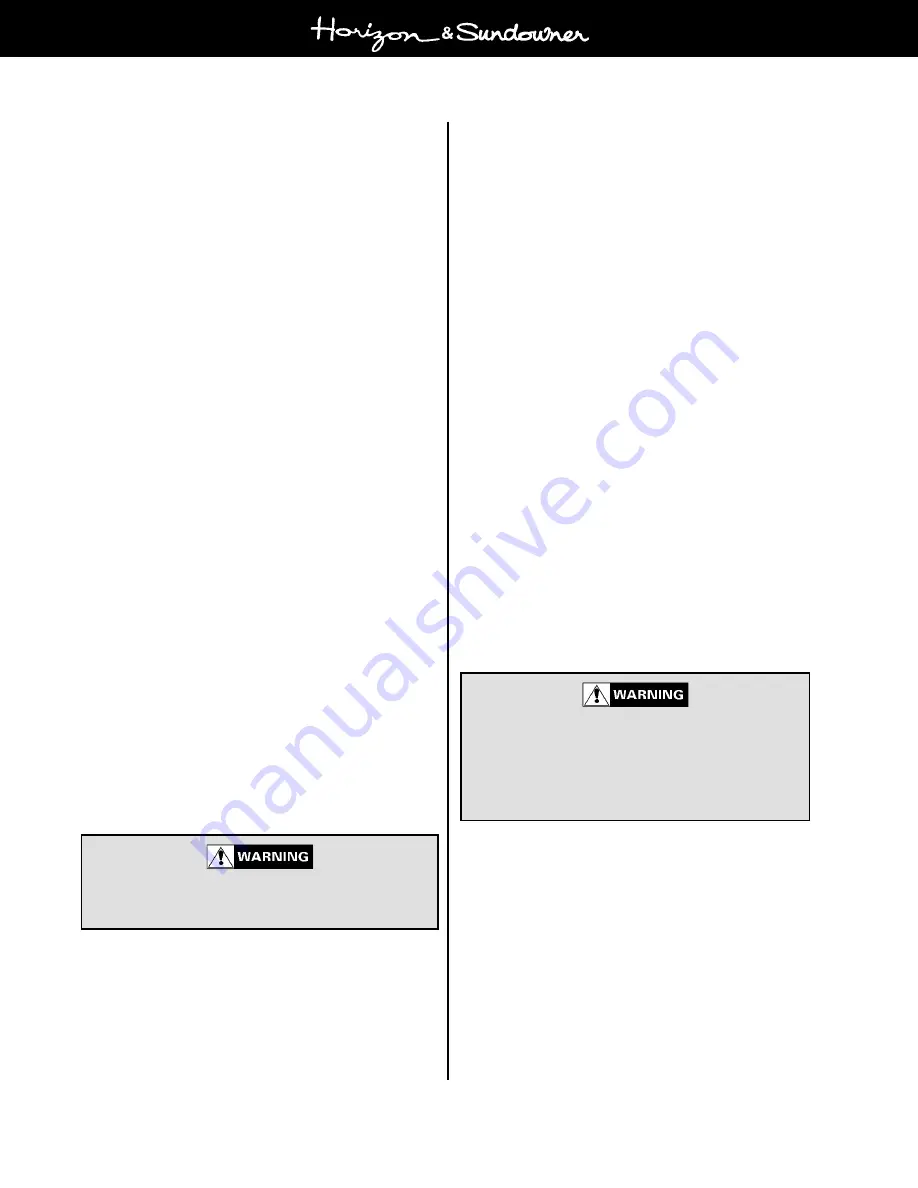
Section I
Page 4
Horizon & Sundowner
Owners Manual
06/00
I - 3
FUELING INSTRUCTIONS
1. Avoid fueling at night except in emergencies.
2. When moored at fueling pier:
a. Do not smoke, strike matches, or throw
switches.
b. Stop all engines, motors, fans, and devices that
could produce sparks.
c. Put out all lights.
3. Before starting to fuel:
a. Ensure that boat is moored securely.
b. Be sure the proper type and grade of fuel as
recommended by your Engine Owners Manual
is used.
c. Determine how much additional fuel is required
to avoid overflow.
4. During fueling:
Keep the fill nozzle in contact with the fuel opening
at all times to guard against possible static spark.
See Figure I6.
Spilled fuel is a fire or explosion hazard. DO
NOT overflow the tank or allow fuel spills into
the hull or bilges. Avoid overboard spills. Visu-
ally monitor the fuel vent located on either the
transom or side of the hull. When the tank is
full, fuel will flow from the fuel vent.
2. Phase separation of fuel will cause contamination.
Water which accumulates in the tank through con-
tamination or condensation will be absorbed by the
alcohol. This water-heavy alcohol will settle at the
bottom of the tank. This phase separation will lead
to fuel tank corrosion. This may also result in a lean
mixture to the carburetor and cause engine stalling
or possible engine damage.
The use of alcohol additives in gasoline has become more
widespread. Regulations on public notification of the
existence of additives is currently controlled by the Envi-
ronmental Protection Agency (EPA). Some states do
require that gasoline pumps display information on addi-
tives (especially alcohol). If alcohol content is not posted,
ask and avoid using fuel containing alcohol if possible.
B. Recommendations
Assume blended gasoline is being used and follow these
recommendations below.
1. Inspect fuel hoses often. A deteriorated hose con-
taining alcohol blended gasoline will normally be soft
and swollen. A deteriorating hose containing no fuel
will normally be hard and brittle. In both cases the
hose should be replaced.
2. Ventilate the engine compartment before starting the
engine(s). Operate the engine compartment blower
for four (4) minutes. Then, prior to starting the
engine(s), check the bilge area for the scent of gaso-
line fumes; DO NOT start the engine(s) if the odor of
gasoline is detected.
3. Frequently inspect the fuel system fittings. Inspect
the fuel tank, pump and filter for signs of leaks or
corrosion. Visually inspect for deteriorating metal fit-
tings at the fuel hose connections.
Avoid serious injury or death from fire or explo-
sion resulting from leaking fuel. Inspect sys-
tem for leaks at least once a year.
If areas are found within the fuel system that appear ques-
tionable, have a qualified marine technician inspect the
system. A thorough fuel system examination should be
made by an experienced marine technician at least once
a year.
















































